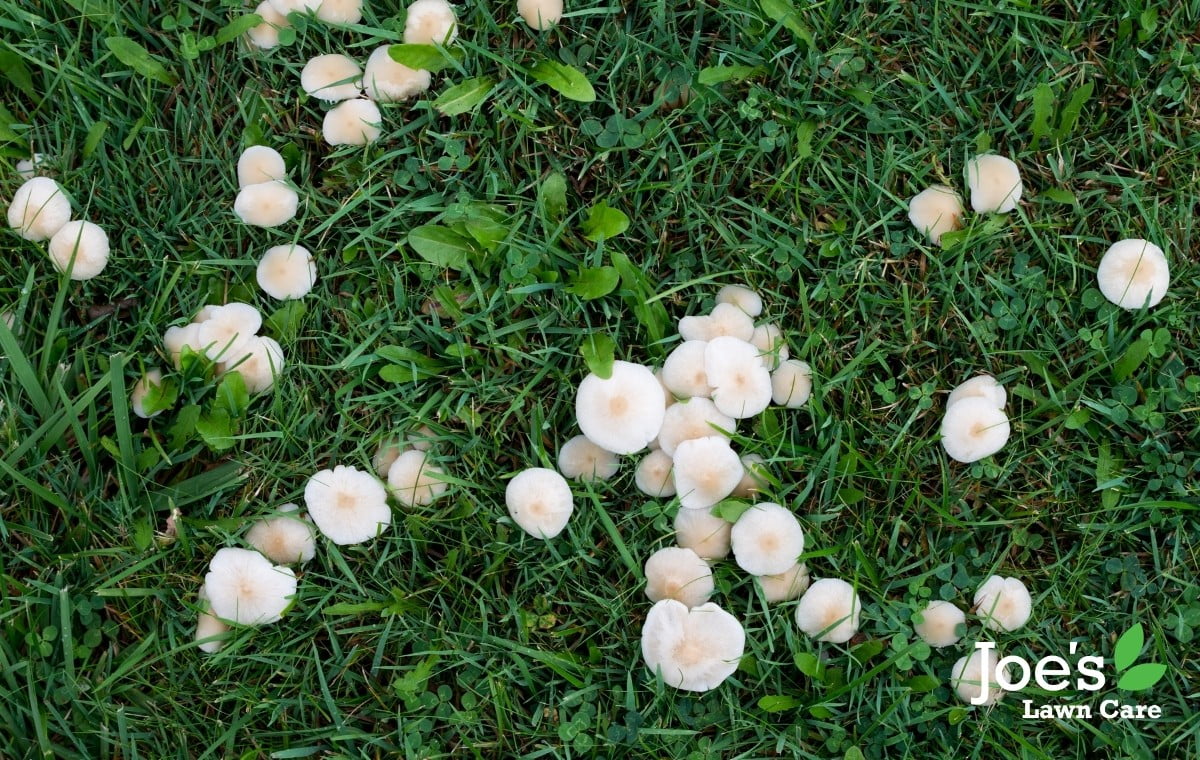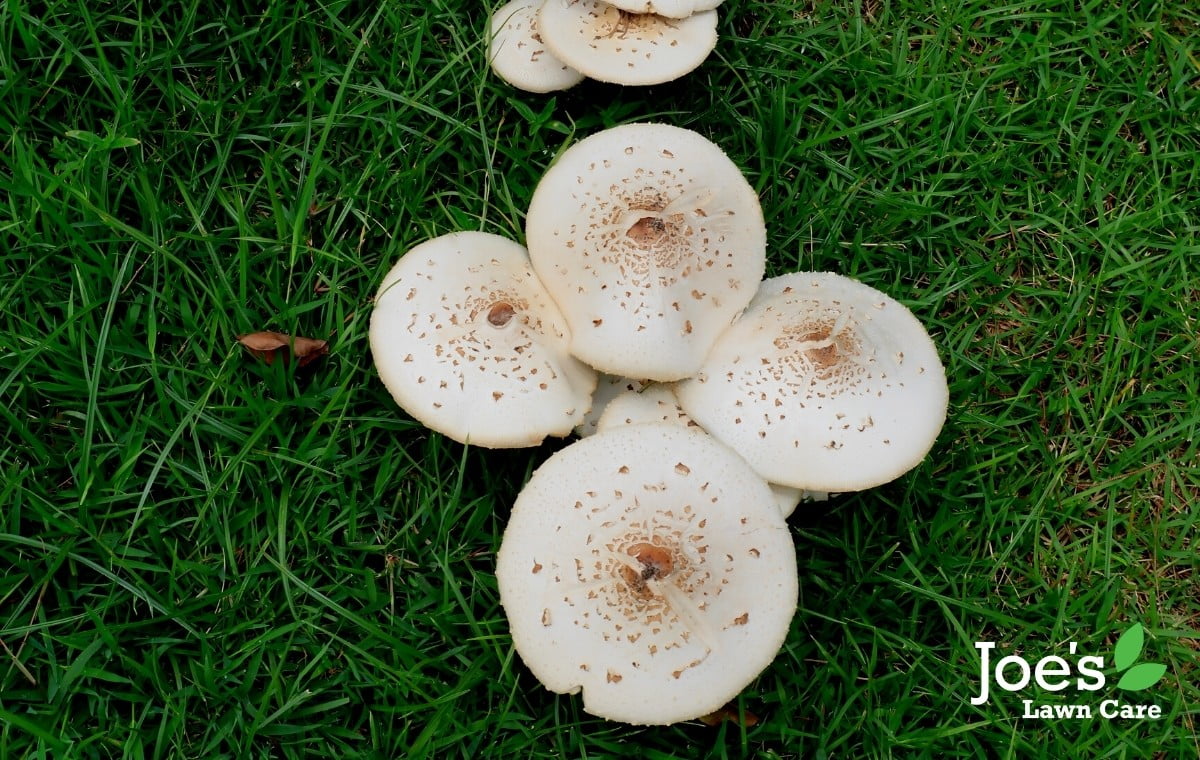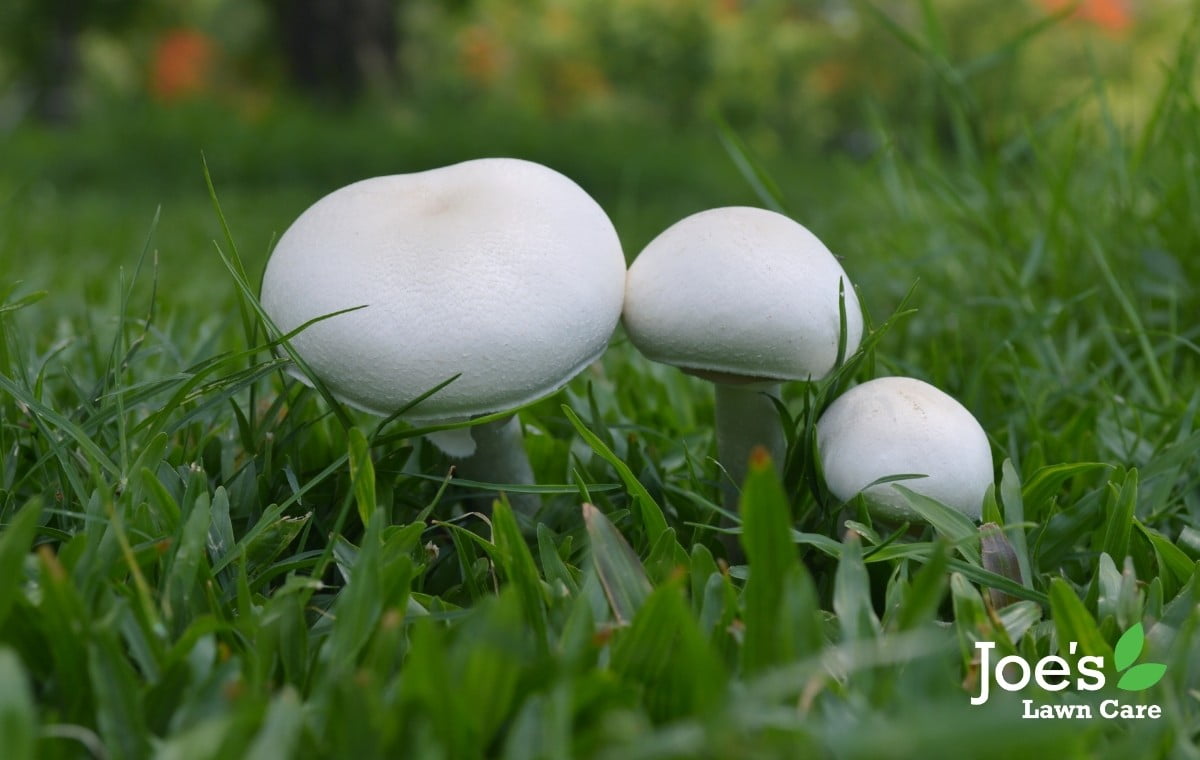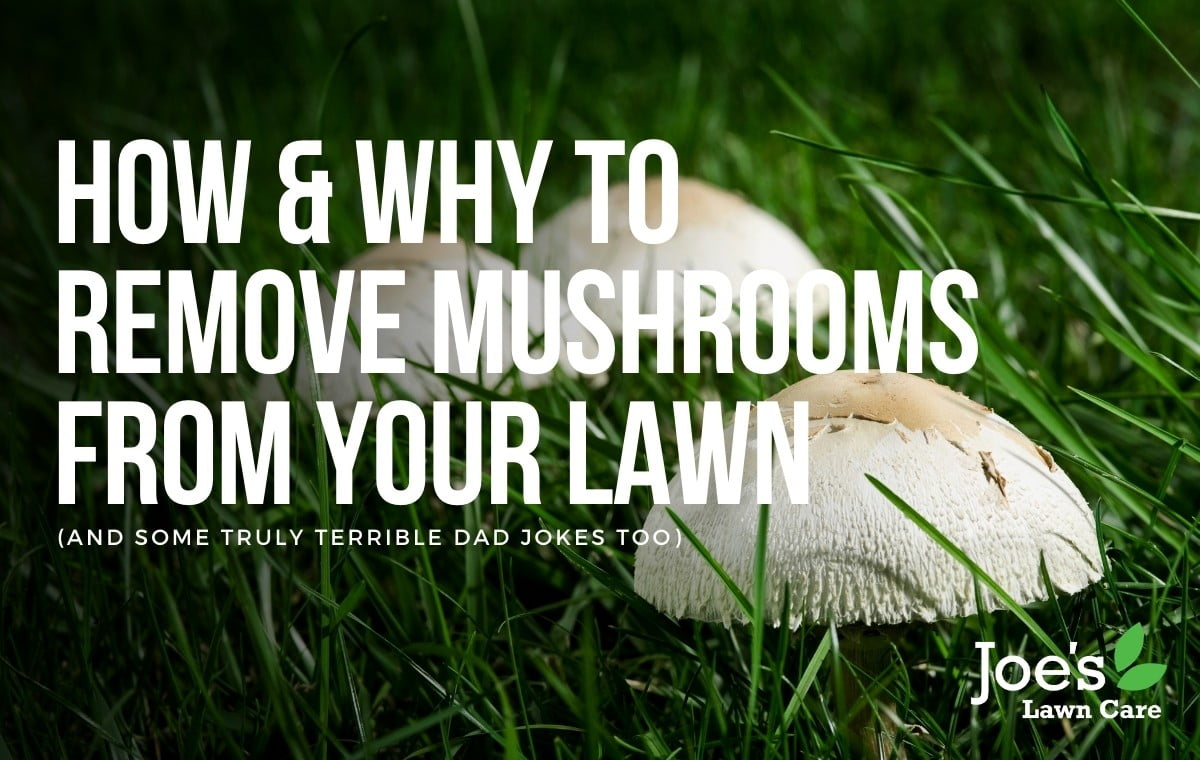How & Why To Remove Mushrooms From Your Lawn. Because even the most fun guy doesn’t want a fungi party in their garden…
In the spirit of spreading a smile during a) these cold, wintery months and b) Lockdown number-something, we’re going to get onto all things mushrooms straight after this brief series of truly awful dad jokes:
- How does a mushroom clean its house? With a mush-broom.
- Why are mushroom children so well behaved? They don’t want to get in truffle.
- What’s a vampire’s favourite soup? Scream of mushroom.
- What’s the difference between a mushroom and a tree? One’s a tree.
C’mon. Don’t pretend you’re not smiling, or tutting (while smiling), or pressing that button that makes you go back to the previous webpage (probably not smiling). Anyway, with all that said and laughed about, let’s get onto the best ways to rid your lovely lawn of fungi because, let’s be honest, there’s not mushroom for them (sorry, we’ll stop now!).

Reasons To Rid Your Lawn of Mushrooms
The truth is, mushrooms very rarely do any real damage to grass, but there are still a bunch of very valid reasons for people wanting to get rid of any mushrooms growing in their garden. First things first, a troop of mushrooms standing to attention in the middle of your lawn isn’t exactly a tonic for tired eyes, especially if you love a well-manicured lawn as much as we do.
But even you don’t mind the odd mushroom saying hello, or think they’re kind of cute in their own weird way, there are other reasons you might want to get rid of them, like if you’re preparing to put your home on the market, or if you’ve got kids that will literally eat anything, including poisonous mushrooms on your lawn. And it’s not just children that can get ill from eating the wrong mushroom, it’s pets too. And even if you don’t have kids or pets, you don’t want to leave a rabble of stinkhorn mushrooms untouched because those mushrooms smell awful.
That said, the most important reason to deal with a mushroom infestation is this: their presence alone may be a sign that there’s a much bigger problem for your grass going on. For instance, seeing mushrooms could mean that the soil underneath your grass is not draining properly, and poor drainage usually leads to overly wet conditions, and overly-wet conditions almost always lead to lawn diseases. Basically, mushrooms are a lot like moss in this instance; they are a sign of bigger issue at play, even if that’s just a pH deficiency in your soil.

Reasons Why Mushrooms Are Sprouting Up in Your Lawn
Most people look at mushrooms in their lawn and think, “whoa, they just sprung up out of nowhere.” But that is very rarely the case. What’s actually happened is, they’ve sprung up as the result of a much-longer process that’s been happening underground.
To breakdown it down quickly, the real culprit of your mushroom infestation is an underground fungus (they’re usually huge) that has been growing bigger and bigger by feeding on decaying organic matter that’s in your soil. That could be anything from dog poo to fallen leaves, grass clippings to lawn thatch (especially when combined with a lack of sunlight and dreadful drainage). As such, the mushrooms you can visibly see are almost like spores that are helping the hidden fungus spread as far as possible.

Getting Rid of Your Mushroom Problem
Most of the time, mushrooms are actually really good helpers when it comes to your lawn care because, well, as this fungus chomps away on all that decaying organic matter, it breaks that matter down into nutrients that your grass looks at like Christmas dinner. That said, if you just can’t stand the sight of them, or the smell of them, or the chance they’ll make your child/pet super-ill, there are some things you can do to get rid of them — and before they release their spores.
Let us make this clear, this approach will not solve your shroom problem. Why? Because that monster mushroom hiding beneath the surface will just keep on doing it’s thing. However, acting before their spores spread will stop the problem escalating, so make sure you act fast or else the spores will become airborne. We know. It’s wild. So rip them out and then move onto these less time sensitive approaches, all of which will help you address the three main causes of your fungus problems:
- Really bad lawn drainage
- Decaying organic matter acting as food
- Way too much shade and not enough sunlight
So, without further ado, here are the best ways to fix your mushroom problem:
Get Your Lawn Aerated
The best thing you can do to address your mushroom problem is to have your lawn professionally aerated, which will not only improve drainage (thus preventing overly wet conditions from causing more harm), but it will help air and nutrients get down to the roots and combat the underground fungus.
Install a French Drain
This may sound like quite a big move, but having a French Drain will help you fight against that decaying organic matter problem as it is all about cleanliness. Of course, you will never be able to remove all of the decaying organic matter in your soil (and you shouldn’t want to either), but increasing your efforts to keep your lawn nice and clean is a great way to keep your lawn healthy in the long run. How else can you do this? Here’s a quick list to help you:
- Spring clean your garden every year
- Bag up or rake away your grass clippings
- Remove any fallen leaves from your lawn
- Have your lawn scarified to remove any thick layer of thatch
And, Finally, Let There Be Light
The more sunlight your lawn gets, the less chance you’ll have of overly-wet conditions, poor drainage and, most of all, a mushroom problem. So look at your garden and see if there are any ways you can let more sunlight into your lawn. Cut back any tree branches, trim your bushes or try moving your garden shed to the other side of your lawn. Anything you can to reduce the amount of shade on your lawn, the better.
Thanks for reading! For more lawn care tips and tricks, follow us on Facebook and Instagram.





